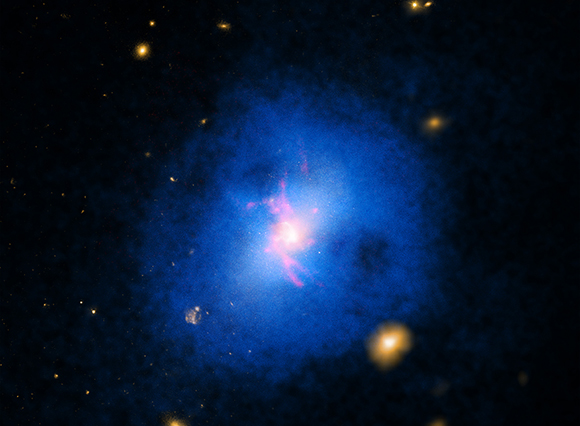
You may have heard of precipitation (pronounced preh-sip-it-AY-shion). It is the fancy name we give to water falling from clouds in the sky, mostly as rain but sometimes as snow, hail or sleet. But would you believe that precipitation is also found in space?
On Earth, precipitation happens when water is heated by the Sun and forms steam (like the steam you see rises from a kettle as the water boils). The steam rises up into the air where it cools down, reforming into tiny droplets of water. These water droplets group together and create the clouds we see in the sky.
Sometimes, something similar happens in galaxies. Clouds of hot cosmic gas cool down, becoming clouds of cold cosmic gas instead. This is also called precipitation. Can you see how the two processes are similar? (Answer: They both create cold clouds.)
However, while precipitation on Earth allows planets and animals to grow, precipitation actually stops the growth of galaxies. At least, it does if the galaxy has a giant black hole at its center.
This is because stars are born from cold clouds of cosmic gas. But in galaxies with central black holes, when a cloud cools down, it is an easier target for a black hole to capture and feed on.
As the black hole feeds it releases a hot jet of energy. The jet then re-heats any nearby clouds of cold gas before they have chance to form into stars.
Cool fact: Collisions between galaxies can cause such intense heat that it "dries up" the precipitation loop for good. Let's hope something similar doesn't happen on Earth!
Watch the video podcast
Do you want to learn more about this topic?
Visit the Chandra field guide or send us your questions in an email: cxcpub@cfa.harvard.edu
In cooperation with Space Scoop: Bringing news from across the Universe to children all around the world. Universe Awareness and the Chandra X-ray Observatory
| Children & Online Privacy |



